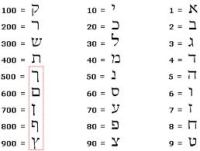So I was recently approved to start receiving materials from Thomas Nelson Publishers for review…and thus they sent me a “welcome” box full of assorted resources for pastors. I thought I’d start with just introducing these materials and a short comment or two about them in posts to come.
Bibles (and Studies):
Women & God: Stuck Studies: The Places We Get Stuck & the God Who Sets Us Free (sample chapter)
Jesus Calling Devotional Bible: Enjoying Peace in His Presence (sample chapter with NKJV)
The Voice New Testament: Step Into the Story of Scripture
The Take Action Bible (NKJV)
The [Expanded] Bible
Videos:
Reel to Real: An Interactive Drama-Based Study “It’s You. Is it Possible to Build Real and Lasting Friendships?” (DVD with Participants Guide)
The Open Table: An Invitation to Know God (DVD with Leader’s Guide)
Manuals:
Nelson’s Children’s Minister’s Manual
Nelson’s Youth Minister’s Manual
A couple of initial comments can be made right away:
(1) I am not particularly a fan of the King James tradition being maintained for contemporary usage. This is my biggest gripe with Thomas Nelson. I do enjoy many of their Word Biblical Commentary volumes (which were sadly not included in the welcome package), but most of their material belongs to the KJV tradition of translations.
(2) Of the two videos I received the “Real to Reel” was fairly well produced, but comes across as rather corny in my opinion. It states that it will take our teens deeper than other materials, but I found the content to be very surface based. “The Open Table” on the other hand was excellent (which is to be expected since it is the work of Donald Miller of “Blue Like Jazz” fame). I would highly recommend this video for introducing a small group to discussions about faith and God.
(3) The [Expanded] Bible and The Voice NT both offer intriguing notions for translational formats. The former has inserted variant readings and translational options right into the text using brackets. This is immediately helpful for understanding nuances of clauses and phrases but becomes nearly intolerable for readability of the text. The Voice NT uses the notion of drama in the formatting of the text and tries to capture a more dramatic retelling through this format. I wonder how helpful this proves in the long run for being helpful or simply a distraction. I will certainly look further through both volumes and have more comments in the future about them.




